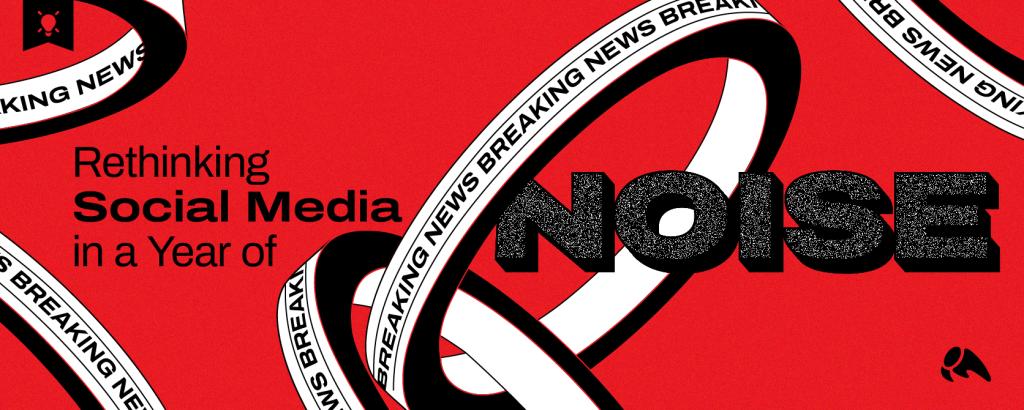Many of our current clients have come to us after feeling overwhelmed, disillusioned or just plain angry at the state of their content marketing strategy. They’ve heard their users love content, but they’re not seeing the results. Where are the comments, the shares, the abundance of Google love? What are they doing wrong?
Below we’ve aggregated some of the most common mistakes we see businesses make with their content marketing efforts, mistakes that have the power to drive customers away from a brand, not toward it.
We hope none sound particularly familiar…
Failure to Plan
Many businesses (and marketers!) don’t initially understand that a content strategy requires just that…a strategy for how you’ll use content to drive attention and leads to your website. For the content you’re creating to be successful, it requires research, thought and careful planning to guide it.
Too often that doesn’t happen. Instead agencies are instructed, either from a third-party vendor or internal staff, to hop right into writing all the words.
Your first priority in content marketing isn’t writing the content or even deciding who will be responsible for creating it. It’s understanding what your goals are for that content.
These might include:
- Generating new leads
- Increasing traffic to your website
- Building brand awareness
- Establishing leadership
- Increasing opportunities for speaking
These goals should then be used to identify the medium that will be most effective for you.
Looking to build awareness? Then adding a blog to your site will give you an outlet for frequent posting and communication with your audience.
Looking to establish authority in your niche? Then a resource guide or product comparison sheet with rich details may be your best bet.
All content is not created equal, nor is it created for the same user. Matching content to the customer lifecycle will help it grow legs and benefit your business.
It doesn’t happen by accident. It happens by plan.
Thinking “Content Marketing” means “Blog”
Hey, I am a fan of blogs. I often talk to small- and medium-sized businesses about why adding a blog to their site is an investment they can’t afford not to make. But that doesn’t mean an investment into content marketing automatically means an investment into blogging. Or that a blog is always the right answer. There’s a rich world of content flavors out there and marketers would be smart to familiarize themselves with all of them.
I had the honor of presenting during a recent PRSA social media workshop held in the Albany area. One content tactic I discussed was using all the different mediums available to get your message out and to educate/entertain/dazzle your audience. We talked about creating things like:
- Authority articles
- Case studies
- Ebooks
- Email newsletters
- Events
- Interactive games
- Microsites
- Mobile apps
- Podcasts
- Presentations
- Surveys
- Tools
- Webinars
- White papers
- Video
And the list goes on. Everything on this list is something we’ve created or facilitated for our clients over the past year. Loving content means understanding content.
Hiring Crappy Writers
No, I totally get it. You didn’t get into your business because you fancy yourself a great writer or because you had a desire to produce content. And as a small shop, hiring someone who is dedicated to write about your industry may not be feasible. So you hired a bunch of freelancers.
And your freelancers suck.
Using freelancers to handle your content needs isn’t a bad tactic. But it is one that requires a lot of care and attention, often much to a business owner’s surprise.
Be prepared to vet out freelance writers with the same rigor and high standards as you vet other vendors. All content is not created equal and not all writers will pay the same care and attention to your needs. How can you get the most out of your freelance investment?
- Use reliable sources like oDesk to find trusted writers and keep scorecards to evaluate how they perform.
- Identify which writers sent content back on time, with no edits and who showed a clear understanding of your business.
- Make note of styles and ability to convert customers.
- Set up question/answer periods between the writer and your staff to help them become experts in your field.
- Create guidelines you can pass off to writers to help them quickly understand what is expected of them and the nuances you’re looking for with your content.
An alternative to hiring a series of one-of freelancers is to partner with an agency to help manage content creation. The benefit of hiring an agency is that they do all that vetting for you. You get their trained writers working directly on your content. Writers who have the time and resources needed to learn the ins and outs of your business and to become part of your team.
Not Doing Your Homework
Whether it’s you or a third-party writing it, someone needs to do the research to determine the types of content best suited for your industry, which social platforms they’ll be shared on, the different audiences you’re targeting and the terms and phrases you’ll want to disperse into the content.
How do you do this?
- Start by doing keyword research around your industry to understand what your audience is looking for and the themes they’re most interested in.
- Monitor Google Trends to see what’s “hot,” what’s rising and what’s yesterday’s news.
- Look at social media sites popular in your niche and create a list of the topics and themes that get the most attention. What are your community’s hot buttons? What do they love talking (read: fighting) about? What are their passion points?
- Is your industry dry on content? Look at popular content from sites unrelated to your industry and find tie-ins or things you can reuse.
Once this research has been compiled you can start building your editorial calendar to guide the type of content you’ll publish, who will write it, how it will be promoted, the need it serves, etc.
Not Maximizing Popular Content
It’s not enough to write great content – you need a promotion strategy around that content. Because content you don’t promote is content you shouldn’t have written. And we don’t get enough time to be proactively wasting it.
Keep an eye on every piece of content posted. Follow the advice in the linked article above for how to promote that content. And when it looks like it’s taking off, when you notice that spark of a flame — fan it.
- Stay active in the conversation
- Respond to comments
- Tweet your responses to your community
- Ask for additional input
- Add a little fuel
- Send the post or ebook or infographic to the people who need to see it
- Tip off the media
- Optimize it for search and social
And generally cause a ruckus! You don’t get a second chance to make a first impression with your audience. So put everything you have into that first content push attempt.
Thinking you’re Not Sexy Enough
This is one of the most common excuses we hear for content marketing failure. The idea that it’s not the client’s fault the content flopped; it’s the boringness of their industry.
There’s no such thing as boring industries. Only boring writers.
How can you get beyond this?
Get Personal: It’s easy to write off an entire industry when you don’t know anything about it. Instead, get intimate with it. Ask questions of your team, of your customers and related to experts that exist in the market. These questions will help you find pain points, opportunities for storytelling, ways to be helpful and will serve to illustrate the types of content that the audience will find most helpful. As we’ve already discussed, there’s no shortage on types of content out there.
Do Independent Research: Creating independent research is my favorite way to find great content opportunities. Maybe you’re a health club collecting data that compares how older folks view healthiness vs. younger ones. Or a dating website putting together research based on the interactions of your members and what women really want in a husband. Offering your readers data that only you have is a great differentiator. What type of research can you do to establish your brand as a leader in the field?
Try Something. ANYTHING! Remember that soap and deodorant company that caused a social media firestorm with witty YouTube videos personally addressed to tweeters? Or the cookie that took over the Super Bowl? Or the brand of toilet paper encouraging people to #tweetfromtheseat? These are all brands that won the content marketing game by daring to get involved in the first place. And the leap they took paid off. Take a similar leap. Try things. See what works. Make changes to get a better result. You have to get in the game.
Be Helpful: When all else fails, be this. Be the guy with the answer and the gal who’s always there to point someone toward a cool new tool. There’s nothing boring about the company that answers your questions and saves you time in your day. It may not sound sexy, but to the person whose day you just saved, it’s the sexiest thing in the world.
If you’re not seeing success with your content marketing efforts, one the items on our list may just be the reason why. Or, anything we missed? Let us know. We’re all friends in the war against bad content.





